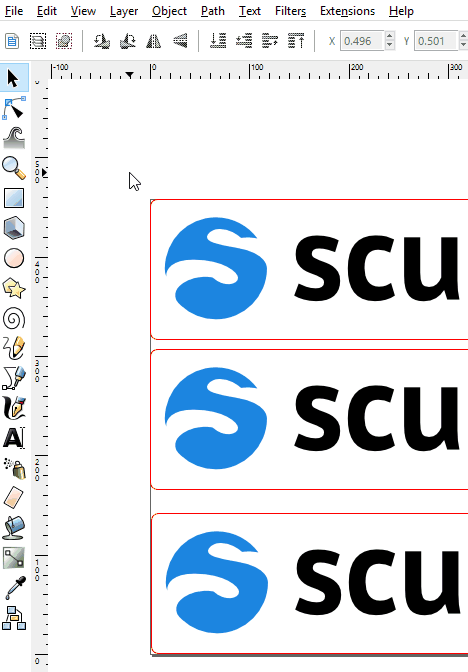
If you have an image that you need to convert to a vector you can get some pointers here. In the image on the right, if looked at closely, you can. Non Vector File formats – jpg, psd, bmp (will need to be converted or redrawn in a vector program) Inkscape + VisiCut Perfect Lasercutting Workflow In the menu on the left, sheet metal is selected. Vector File formats – AI, EPS, SVG, DXF, DWG or (sometimes) PDF (should be ok to use) Vector files need to be DRAWN in the vector program rather than just imported or pasted in there. Youll need to import the image, and then use the Path > Trace Bitmap > Edge Detection command to trace the image outline. If it stays a nice clean line then it’s vector. Usually the easiest way to tell if a file is vector or not is to zoom in on your file as far as you can, does it go all blurry? If so it’s not vector. There are lots of tutorials on the internet to show you how to use these programs. Vector files can be created in programs such a Adobe Illustrator, Corel Draw, Inkscape (free), Autocad or Draftsight (free). Shapes and lines make up vector graphics, which are fully scalable images, (you can make them HUGE without losing any quality) while raster images are made of pixels and cannot be scaled up without going blurry. You'll get another window of export options, make sure the Base unit setting is mm, Use ROBO-Master type of spline output is unticked (this can cause problems with curves) and then hit OK.A vector file is a graphics file that contains a vector image, rather than a raster, or bitmapped, image.

Inkscape can write DXF files, just go to File → Save As…, or File → Save a Copy… and select Desktop Cutting Plotter (AutoCAD DXF R14)(*.dxf) from the list of filetypes (it's near the bottom) The laser cutter does a reasonable job of importing DXF files, so that's our preferred format for importing. It may appear that nothing has happened, but in fact your objects are now paths and you're ready to export to the laser cutter!


This is easy to fix: select all of your drawing ( Edit → Select all, or +A) and then run Path → Object to Path. However it is possible to add a vector clipping mask to a raster image in Inkscape. The laser cutter software only imports paths, not Inkscape objects, so if you don't convert then you might lose objecty things like rounded boxes and text. import into Inkscape and convert to vectors by tracing the image as a bitmap.

Before exporting, make sure to convert all objects to paths. I have created from digital sketches 3d laser cut artforms using FabLab.


 0 kommentar(er)
0 kommentar(er)
